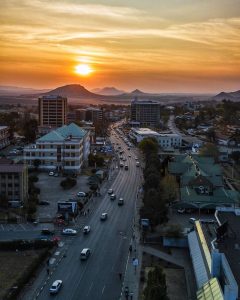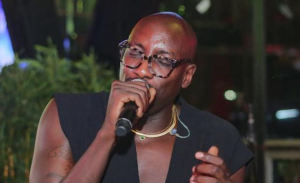Senegalese artisans exhibit for the first time at prestigious art event
4 min readFor the artistic and cultural elites of Senegal, the monthlong Dakar Biennale of Contemporary African Arts is a celebratory moment.
Every two years, hundreds of artists, curators and art lovers from across the world descend on the West African capital to attend the event, which was founded in 1989 by the Senegalese government and has over the decades become one of the most important showcases on the continent.
Pop-up exhibitions are held in hundreds of venues, from stylish five-star hotels to local art galleries. Roads are even more crowded than usual, with traffic jams stretching out for miles along the Corniche, the city’s picturesque seaside boulevard. Every night, there are music concerts, fashion shows, talks with artists and movie screenings held against the backdrop of palm trees and to the soundtrack of popping champagne bottles.

But it wasn’t until this year that the local artisans in the Soumbedioune crafts market, just off the Corniche and at the doorstep on the Medina working-class neighborhood, realized what the Biennale was.
For years, “we saw the OFF signs, but we didn’t know what was going on,” said Ndiouga Dia, a 48-year-old leatherworker from Soumbedioune, referring to a series of events organized in parallel to the official government program, scattered all over the city. “Only the artists knew among themselves what was going on.”
Craftsmanship is deeply rooted in the country’s culture. Senegal, like most African nations, has little capacity for industrial production, and traditionally much of its economy has relied on locally produced goods. For centuries, craftsmen played a central role in Senegalese social life, sculpting religious statues and ceremonial masks, sewing boubous (traditional colorful wide-sleeved robes), molding pottery and weaving baskets.
But these days, their role is in decline. As living costs rise, many Senegalese opt for cheaper, often Chinese products. And those that can afford it buy Western clothes and furniture to mark their social status.
So when two designers approached Dia, who is also the community leader of the Soumbedioune artisans, with a proposal for a joint exhibition, he didn’t hesitate for a second.

It felt good to be noticed and included, Dia said.
Designers Kemi Bassène and Khadim Ndiaye asked five artisans — a sculptor, a painter, a jeweler, a leatherworker and a upholsterer — to interpret the theme of “hippo.”
They chose the theme because it was easily recognizable across Africa, they said, bringing together people from different nations who live next to the water.
The exhibition, held in the central square of Soumbedioune, surrounded by artisanal boutiques and restaurants selling thieboudienne, the most famous Senegalese dish, has been a hit among locals. There are hippo earrings and a hippo necklace; a giant wooden sculpture of a sleeping hippo; and a hippo-shaped bag.
Papise Kanté, a 45-year-old sculptor who created two wooden hippo statues for the exhibition, said it allowed him to tap into a more creative part of his work, instead of just producing objects that he intended to sell.
“I have been sculpting since I was a young child,” said Kanté, who comes from a long line of sculptors. “Every artist wants to get better.”
But it also gave his work recognition.
“It’s because of the Biennale that people know my work,” he said. If you participate in the Biennale, he added, “you are proud.”
Bassène, the curator, grew up in Medina, next to Soumbedioune, but is now based in Paris. He said he wanted to bridge the divide between arts and crafts.
“This is the first time in the history that artisans, especially those who are custodians of traditional craftsmanship, are invited to the Biennale,” Bassène said. “For craftsmen in Africa, there is a natural progression towards the world of modern design.”
It was “normal,” he said, to include artisans in the Biennale “if we wanted to try to decolonize a little.”
This year’s Biennale is being held as Senegal is undergoing profound political change, with the newly elected authorities charting a more self-reliant and pan-African course.
Last month, the governing party, PASTEF, secured a resounding victory in legislative elections. Its win granted President Bassirou Diomaye Faye a clear mandate to carry out ambitious reforms promised during the campaign to improve living conditions for ordinary Senegalese — including greater economic self-reliance, revamping the fishing industry, and making maximum use of natural resources.
The theme of this year’s Biennale has been “The Wake,” alluding to the emancipation of the African continent from its remaining dependence on former colonial powers.
The new government of Senegal has “a transformational agenda,” said Bassène. “I think that what we have experienced politically will impact all the social sciences and all art.”
In the meantime, the Soumbedioune artisans have big plans. Dia, the community leader, said that they are planning a collaboration with a local school to manufacture backpacks for students.
His dream, he said, was to expand the production across the whole country so the Senegalese parents “do not have to buy Chinese products.”
“We have all the know-how,” he said. “We can produce more.”







